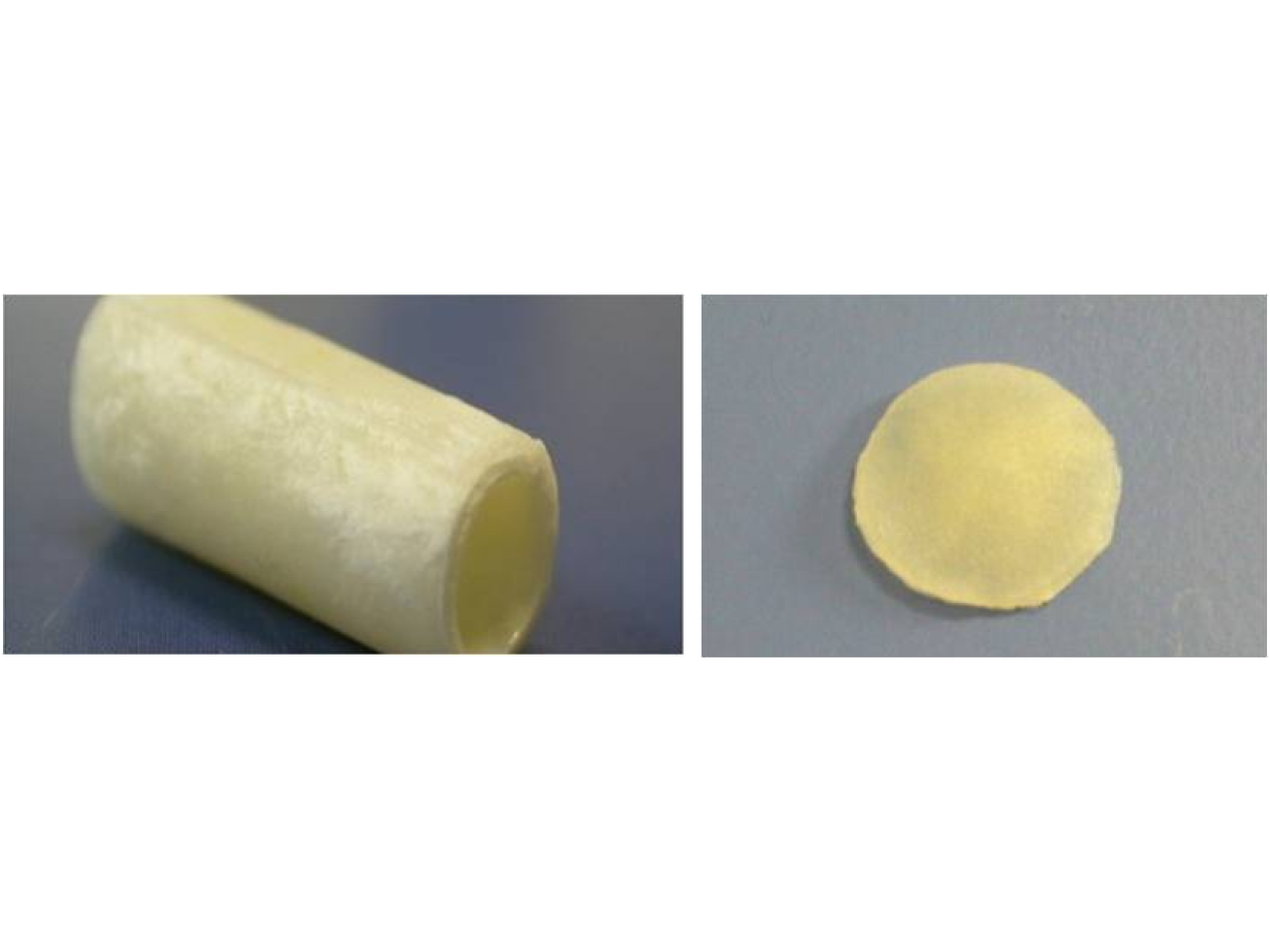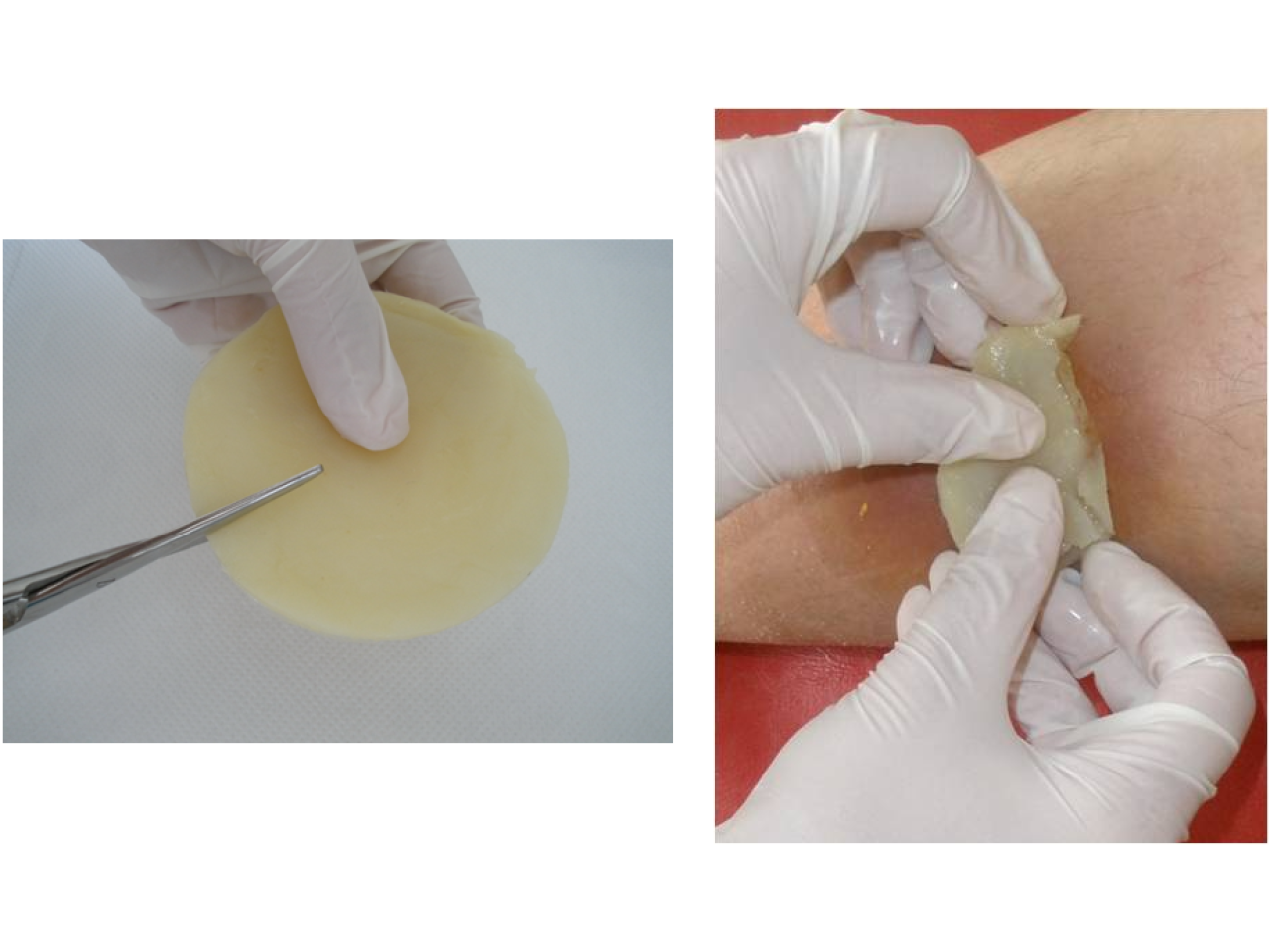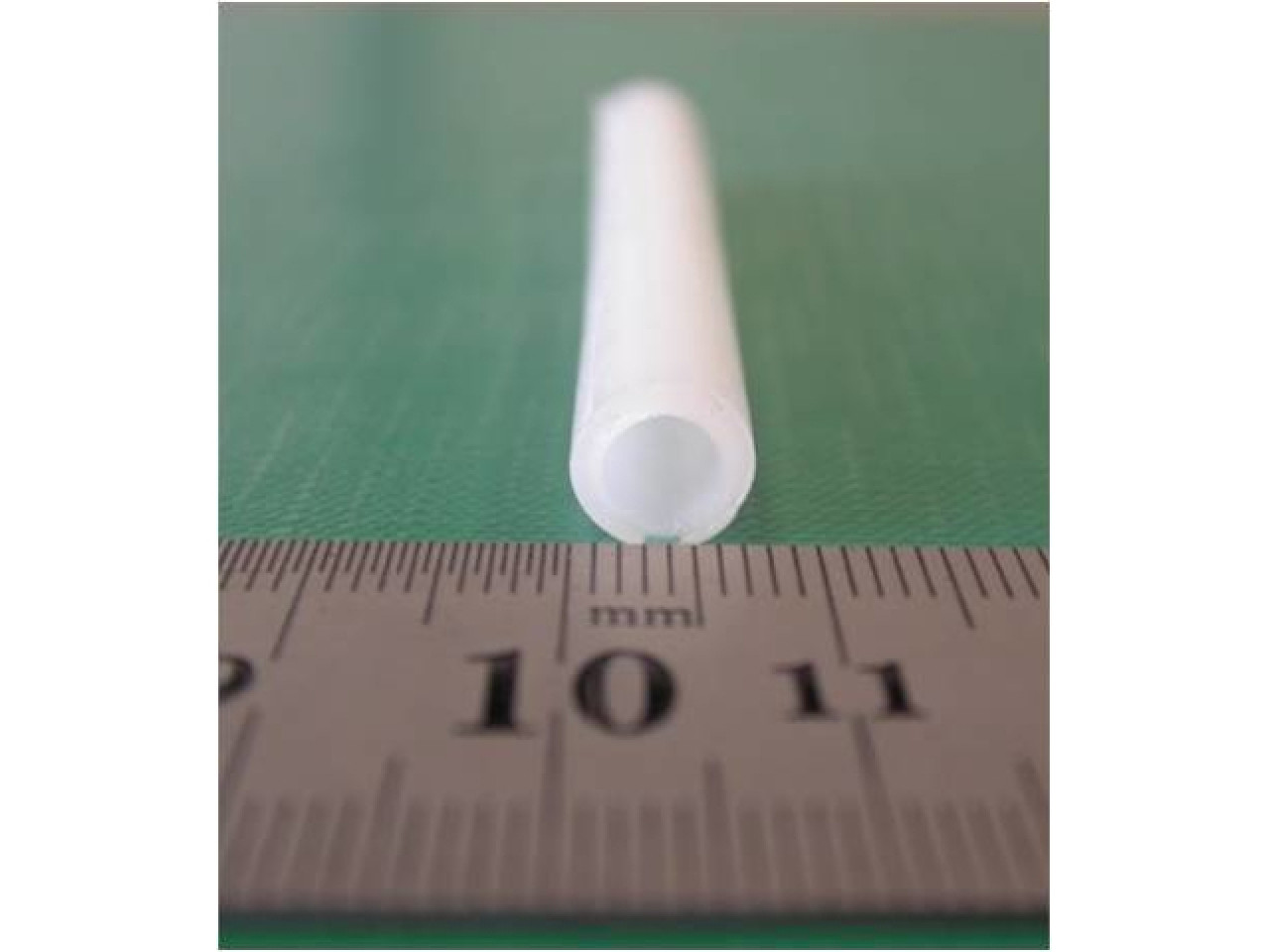Biopharmanet-tec has developed an innovative system for tissue repair and the local release of drugs stimulating regeneration, based on physically modified chitosan. Biocompatible and biodegradable scaffolds are prepared to be applied locally, to act as a support and guide for the growth of the host cells and to release active ingredients stimulating cell proliferation. These systems can be applied in the treatment of skin lesions, in the reconstruction of hollow organs, in bones and joints regeneration, both in the orthopedic and odonthoiatric field.
 Polymeric scaffold for tisuue regeneration and drug delivery
Polymeric scaffold for tisuue regeneration and drug delivery
The proposed technology uses natural components, to create parts of organs or tissues damaged also able to release drugs in a controlled manner in situ. The installation of these systems allows to obtain a cell growth, driven by the physical characteristics of the scaffold (morphology, porosity) and the localized release of specific drugs or biomolecules directly in the application site. Preclinical studies in animals have confirmed the efficacy and safety of this approach, highlighting the marked biocompatibility and flexibility.
The technology can be used in the treatment of skin lesions, in the reconstruction of hollow organs, in the osteoarticular regeneration, both for orthopedic and odonthoiatric field.
 Application of the chitosan scaffold for the wound healing.
Application of the chitosan scaffold for the wound healing.
Innovation in the surgical treatment: application of an absorbable prosthesis for the reconstruction of damaged structures and the localized drug release.
The current treatment of intrahepatic biliary tract lesions involves resection of the specific portion and subsequent anastomosis of the small intestine proximal stump. In many cases the operation is complicated by retrograde infection via the gut, or due to stenosis at the anastomosis level, determining the need for the patient to a new anastomosis. In the worst cases the bile stagnation, due to an inadequate flow of bile, can lead to the need for a liver transplant. The availability of a resorbable prosthetic implant that replaces the removed bile duct could be an important step forward in the surgical treatment. The polymer scaffold of cylindrical shape behaves like an artificial bile duct, able to function in an identical manner to the natural organ, preventing the alterations (stenosis) of bile flow. This approach can also help convey antimicrobial drugs, improving the chances of successful prosthetic implant.
Azienda Ospedaliero-Universitaria di Parma; AUSL Romagna - Ospedale di Ravenna
The technology is protected by two patents, one of which is European and one Italian. Contacts are on going with pharmaceutical industry partners for the development of additional products based on the technology to be applied in the field of osteo-articular reconstruction.
 Cylindrical implants of resorbable chitosan
Cylindrical implants of resorbable chitosan

